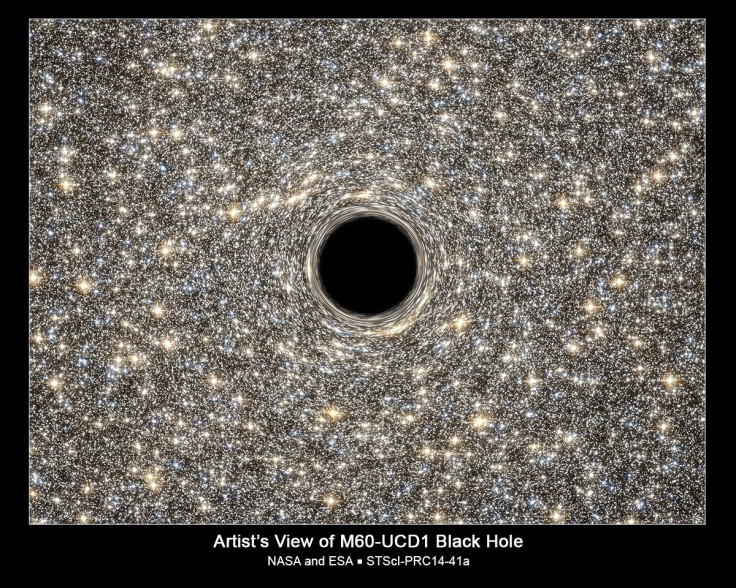Super Massive Black Hole Detected in Tiny Dense Galaxy

Astronomers using data from Nasa's Hubble Space Telescope and ground observation have found a monster black hole inside one of the tiniest, densest galaxies ever known.
The black hole at the centre of our Milky Way galaxy has the mass of four million suns but still is less than 0.01% of the Milky Way's total mass.
By comparison, the supermassive black hole at the centre of M60-UCD1, with a mass of 21 million suns, is a big 15% of the small galaxy's total mass.
The finding has thrown open the likelihood of many such compact galaxies housing black holes.
One theory is that M60-UCD1 was once a large galaxy containing 10 billion stars, but when it passed very close to the centre of an even larger galaxy, M60, all the stars and dark matter in the outer part of the galaxy were acquired by M60. Such cannibalism is common in galaxy formation.
Dwarf galaxies are thus not islands of stars born in isolation, according to the theory.
Eventually M60-UCD1 may fully merge with M60, which has its own monster black hole that weighs 4.5 billion solar masses. Then the two black holes will also merge.
The M60-UCD1 dwarf galaxy packs 140 million stars within a diameter of about 300 light years, which is only 1/500th of our galaxy's diameter.
A resident of the galaxy would be dazzled by a million stars in the sky as compared to the few thousands we see in our sky, says the Nasa press release.
The University of Utah team used the Hubble Space Telescope and the Gemini North 8-metre optical and infrared telescope on Hawaii's Mauna Kea to observe M60-UCD1 and measure the black hole's mass.
Both galaxies are 50 million light years away.
The study is published in Nature.
© Copyright IBTimes 2025. All rights reserved.





















